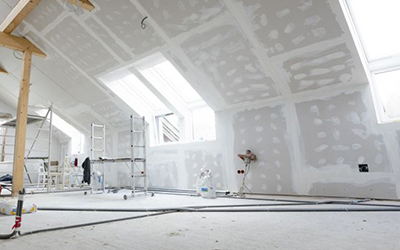
With more people becoming aware of how building materials affect the environment, the building industry is embracing innovative solutions to create more sustainable and eco-friendly living spaces. In Ontario, where residential construction is thriving, homeowners and builders are exploring alternatives to traditional drywall to minimize their ecological footprint. In this blog, we will explore some of the latest innovations in residential drywall, focusing on eco-friendly options and sustainable practices.
Recycled Drywall Materials: Traditional drywall production involves extracting gypsum from mines, which can be energy-intensive and contribute to environmental degradation. A more sustainable alternative consists of using recycled materials. Manufacturers are now producing drywall with recycled gypsum and paper, reducing the demand for virgin resources. It conserves natural resources but also helps divert waste from landfills.
Low VOC (Volatile Organic Compound) Drywall: Indoor air quality is a significant concern for homeowners. Conventional drywall can emit harmful VOCs, which can adversely affect health. To address this issue, eco-friendly drywall options with low or no VOCs are gaining popularity. These products are designed to minimize off-gassing, providing a healthier indoor environment for residents.
Hempcrete Drywall: Hempcrete is an innovative and sustainable building material gaining traction in construction. Combining hemp fibres, lime, and water, hempcrete is carbon-negative and provides excellent insulation properties. Manufacturers are now exploring the incorporation of hempcrete into drywall products, offering a greener alternative for residential construction.
Prefabricated Drywall Systems: Prefabricated or modular construction has become a trend in sustainable building practices. Prefabricated drywall systems are designed off-site, reducing construction waste and promoting efficient material use. These systems also allow for more straightforward deconstruction and recycling at the end of a building’s life cycle, contributing to a more circular economy.
Energy-Efficient Drywall Additives: Innovations in drywall extend beyond the materials themselves. Some manufacturers are developing energy-efficient additives that enhance the thermal performance of drywall. By improving insulation, these additives can lessen the need for heating and cooling systems, which lowers household energy usage.
Waste Reduction Practices: Sustainable drywall installation involves using eco-friendly materials and implementing waste reduction practices. Construction teams can adopt strategies such as precise measurement, modular design, and recycling programs to minimize waste generated during installation.
The need for sustainable building techniques is increasing, and the residential construction industry in Ontario is witnessing a shift towards eco-friendly drywall options and sustainable practices. From recycled materials to innovative additives, these advancements contribute to creating healthier homes while reducing the environmental impact of construction. As homeowners and builders become more conscious of their choices, the future of residential drywall in Ontario looks promising, with a commitment to sustainability and a greener, more environmentally friendly construction industry.

Welcome to Ontario Drywall and Taping, where we believe in turning your house into a home. One of the crucial steps in achieving a polished and inviting living space is finishing your residential drywall. In this blog, we’ll explore some expert painting and decorating tips to enhance the beauty of your finished drywall and transform your living space into a haven.
Surface Preparation: Before diving into the world of colors and decor, ensure your drywall surface is adequately prepared. Sand any imperfections, fill in gaps or cracks, and prime the surface. A smooth and even canvas will provide the best results when applying paint and other decorative finishes.
Choose the Right Paint: Using the appropriate paint is crucial for a polished and long-lasting finish. Choose premium paints that are made especially for interior walls. Consider factors such as washability, sheen, and colorfastness. Remember that lighter colors make a room feel more spacious, while darker hues add warmth and coziness.
Experiment with Accent Walls: Inject personality into your space by creating an accent wall. To highlight a particular area, use a striking pattern or contrasting color. This simple yet effective technique can add depth and interest to your room without overwhelming the entire space.
Texture and Dimension: Play with textures to add dimension to your walls. Consider techniques like sponge painting, faux finishes, or textured wallpapers to create visual interest. These methods break the monotony of a flat surface and add a touch of luxury to your living space.
Embrace Decorative Molding: Enhance the elegance of your finished drywall by incorporating decorative molding. Crown molding, chair rails, and baseboards can add a timeless charm to any room. Choose molding styles that complement your overall design aesthetic and paint them in contrasting colours to make them stand out.
Lighting Matters: Remember to consider the impact of lighting on your painted walls. Experiment with different lighting fixtures to highlight specific areas or create focal points. Strategically placed lighting can accentuate the colors and textures of your finished drywall, elevating the room’s overall ambiance.
Accessorize Thoughtfully: Remember the finishing touches once the paint has dried and the decor is in place. Thoughtfully chosen accessories like artwork, mirrors, and statement furniture pieces can tie the entire room together. Consider your space’s color palette and style when selecting these items to ensure a cohesive look.
Achieving a fresh and inviting look for your finished residential drywall involves a combination of careful preparation, thoughtful color choices, and creative decorating techniques. Using the advice mentioned earlier, you can turn your living area into a welcoming haven that showcases your style and makes you feel at home every time you walk in. At Ontario Drywall and Taping, we’re dedicated to helping you turn your house into a home you’ll love.
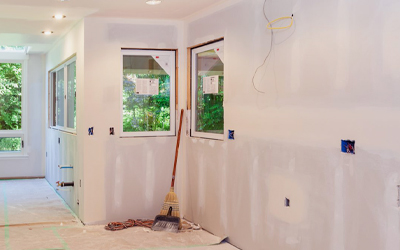
Drywall is a common building material used in homes and commercial spaces for its durability and versatility. However, like any construction material, drywall can encounter various issues over time. In this blog, we’ll explore some common drywall problems faced by homeowners and professionals in Ontario, Canada, and provide practical solutions to address these issues.
Problem: Cracks in drywall and popped nails are among the most common issues. They can occur due to temperature fluctuations, settling of the building, or poor installation.
Solution: For small cracks, use a joint compound to fill them. Popped nails should be hammered back in and covered with joint compound. Ensure proper framing and use screws for more secure installation.
Problem: Bubbling or blistering can be caused by water damage, high humidity, or improper installation.
Solution: Identify and eliminate the source of moisture. Cut away the damaged area, apply a sealing primer, and patch it with new drywall or joint compound.
Problem: Inconsistent textures on drywall surfaces can result from uneven application or improper mixing of texture compounds.
Solution: Sand the uneven areas, reapply the texture using the correct technique and blend it seamlessly with the surrounding surface.
Problem: Stains and discoloration can occur due to water leaks, smoke, or mold growth.
Solution: Address the underlying issue causing the stain. Clean mold with water and bleach, and repaint the affected area after proper drying. For smoke stains, use a specialized primer before painting.
Problem: Uneven or visible seams can result from poor taping and joint compound application.
Solution: Ensure proper taping techniques, feather the edges of the joint compound, and sand the surface for a smooth finish. Multiple thin coats are often better than a single thick one.
Problem: Nail pops occur when the drywall nails push through the surface due to settling or inadequate installation.
Solution: Hammer the popped nail back in and drive a new screw nearby. Cover with joint compound and sand for a smooth finish.
Addressing drywall issues is essential to maintaining your space’s aesthetic appeal and structural integrity. You can successfully address common drywall issues in Ontario by determining the underlying cause and implementing the necessary remedies. Consulting with a professional drywall and taping service can ensure a lasting and quality solution if you’re unsure or facing complex issues.

To live more sustainably and use less energy, the importance of a well-insulated home cannot be overstated. Among the key elements contributing to energy efficiency, drywall plays a crucial role. This blog entry addresses the significance of energy efficiency in home construction, focusing on Ontario Drywall and Taping tips to create a well-insulated living area.
Energy efficiency is about saving money on utility bills and reducing our carbon footprint. A well-insulated home conserves energy, decreases greenhouse gas emissions, and ensures a comfortable living environment year-round. The first step towards achieving energy efficiency is understanding the role of insulation materials, and drywall is a significant contributor.
Drywall serves as more than just a finishing material for your walls. It is essential for controlling temperature and preserving a cozy interior atmosphere. Drywall functions as a thermal barrier when appropriately installed, preventing heat gain in the summer and heat loss in the winter.
Proper Sealing: Ensure no gaps or cracks in the drywall installation. Sealing openings will prevent air leakage, a significant factor in energy loss.
Choose the Right Drywall Thickness: Thicker drywall provides better insulation. Selecting the appropriate thickness for your walls can significantly impact energy efficiency.
Consider Insulated Drywall: Invest in insulated drywall, which has added thermal resistance. This type of drywall enhances your home’s overall insulation capabilities.
While drywall is a crucial player in insulation, it’s essential to consider the entire building envelope. Proper insulation in the attic, floors, and exterior walls complements the benefits of insulated drywall, creating a comprehensive energy-efficient structure.
Opt for environmentally friendly and sustainable drywall materials. Consider products with recycled content or those that have received certifications for low environmental impact.
Engage experienced professionals for drywall installation. Proper installation ensures that the insulation properties are maximized and potential issues are minimized.
Creating an energy-efficient home is a responsibility we all share in pursuing a sustainable future. Ontario Drywall and Taping offers valuable tips for ensuring that your home is well-insulated, positively impacting both your energy bills and the environment. By incorporating these tips, you contribute to a greener tomorrow while enjoying the comfort of an efficiently insulated living space.

Regarding home improvement projects, the spotlight often falls on trendy decor, high-tech appliances, or stylish furniture. However, a crucial element can significantly impact your home’s value and overall aesthetic: quality taping and mudding. Ontario Drywall And Taping is your key partner in bringing this transformative process to your living spaces.
Taping and mudding may seem like technical jargon, but they play a pivotal role in creating seamless, flawless walls. At Ontario Drywall And Taping, we understand the artistry behind this process. Our team of skilled professionals meticulously applies joint tape and compound to conceal seams, cracks, and imperfections, ensuring your walls look smooth and flawless.
Imagine walking into a room with walls free from visible joints, cracks, or uneven surfaces. It is the magic of quality taping and mudding. Beyond the practical aspects of concealing imperfections, our expert craftsmanship enhances the visual appeal of your home. The smooth surfaces create a canvas for any paint color or wallpaper pattern to truly shine, elevating the overall aesthetic of your living spaces.
Investing in quality taping and mudding isn’t just about aesthetics; it’s a strategic move to enhance your property value. Potential buyers are quick to notice well-maintained and visually appealing interiors. With Ontario Drywall And Taping’s expertise, you’re not just improving the appearance of your home – you’re making a sound investment that can pay off when it’s time to sell.
Choosing Ontario Drywall And Taping means choosing a seamless and stress-free experience. The skilled professionals at Ontario Drywall And Taping are dedicated to achieving outstanding results. Our focus on effective communication and unwavering dedication to quality craftsmanship are paramount to ensuring your absolute satisfaction throughout the process.
Quality taping and mudding may be behind the scenes, but their impact on your home’s value and aesthetics is undeniable. With Ontario Drywall And Taping, you’re not just getting a service – you’re investing in the longevity and beauty of your home. Elevate your living spaces, boost your property value, and experience the difference that precision taping and mudding can make. Contact us today to embark on a journey of transformation.
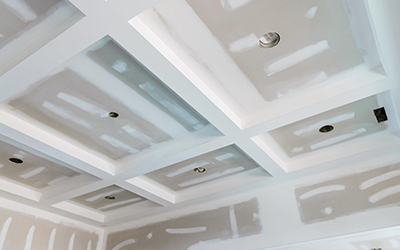
When perfecting the walls of your Toronto home or business, considering the seasonal aspects is crucial for a flawless finish. Ontario Drywall And Taping is here to guide you through the seasonal considerations for taping and mudding, ensuring your project withstands the diverse weather conditions in the Toronto area.
As winter blankets Toronto in snow and cold temperatures, tackling taping and mudding projects requires special attention. Explore the techniques and materials that excel in low temperatures, preventing issues like slow drying times and compromised adhesion.
Springtime in Toronto offers optimal conditions for taping and mudding. Uncover the advantages of tackling your drywall projects during this season, from faster drying times to the comfort of working in milder temperatures.
The summer sun brings warmth but also poses challenges like rapid drying times. Learn how Ontario Drywall And Taping navigates the heat to ensure a smooth and even finish, preventing issues such as cracking and uneven surfaces.
As fall sets in, it’s the ideal time to prepare your walls for winter. Discover the strategic approaches to taping and mudding that will fortify your surfaces against the cold and humidity, ensuring longevity and durability.
Ontario Drywall And Taping provides year-round tips for maintaining consistency in taping and mudding quality. From humidity control strategies to selecting suitable materials, ensure your project’s success regardless of the season.
Navigating the seasons is an art in the world of taping and mudding. Ontario Drywall And Taping combines experience with local expertise to ensure your project’s success year-round. Trust us to transform your space into a masterpiece that withstands the test of Toronto’s diverse weather.
Ready to embark on your taping and mudding journey? Contact Ontario Drywall And Taping today for expert advice and services tailored to the unique seasonal considerations of Toronto and the surrounding areas.
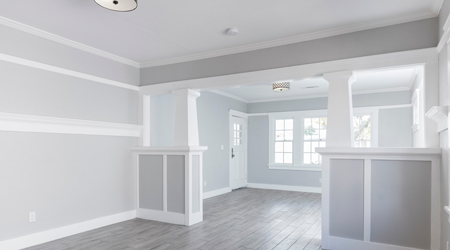
When it comes to home improvement projects, drywalling is a task that often requires precision and attention to detail. While hiring professionals can ensure a flawless finish, it can also strain your budget. The good news is that achieving professional-looking results doesn’t have to break the bank. This guide will explore budget-friendly drywall tips to help you transform your Ontario home without compromising quality.
Plan and Measure Carefully: Before diving into your drywall project, take the time to plan and measure accurately. Wasted materials are wasted money. Create a detailed plan for your space, including doors, windows, and other openings. It will help you order the proper drywall sheets, minimizing excess and reducing costs.
Explore Discounted Materials: Many home improvement stores offer discounted or slightly flawed drywall sheets at a fraction of the cost. While these materials may have minor imperfections, they are often hidden once painted or covered with joint compounds. Explore your local suppliers for such deals to stretch your budget further.
DIY Taping and Mudding: Hiring a professional taper and mudder can significantly add to your expenses. Consider taking on this aspect of the project yourself, following online tutorials and guides. With practice, you can achieve a smooth finish without costly professional services.
Rent Tools Instead of Buying: Investing in specialized tools for a one-time project can be expensive. Instead, check if your local hardware store offers tool rentals. Renting tools like a drywall lift, power sander, or texture sprayer for a specific period can be more cost-effective than buying them outright.
Optimize Layout to Minimize Waste: Carefully plan the layout of your drywall sheets to minimize waste. Adjust sheet placements to ensure you can use offcuts for smaller sections. It not only reduces material costs but also minimizes the environmental impact of your project.
Consider Second-Hand Materials: Explore local classifieds or salvage yards for second-hand drywall materials. While this may require more effort, it can yield significant savings. Ensure the materials are in good condition and free from moisture damage before purchasing.
DIY Texture Application: If you want to add texture to your walls or ceilings, consider doing it yourself. Numerous DIY texture techniques can be achieved with essential tools and materials. Experiment with a small section before tackling the entire project to ensure you’re comfortable with the process.
Opt for Budget-Friendly Paint: Choose budget-friendly paint options once your drywall is in place. Many affordable paints offer excellent coverage and durability. Consider buying misprinted or discounted paints, as they can provide substantial cost savings while maintaining a high level of quality.
Combining these budget-friendly drywall tips allows you to achieve professional results without overspending. Patience and attention to detail are critical to a successful DIY drywall project. Through diligent effort and meticulous planning, you’ll have beautifully finished walls that enhance the aesthetic of your Ontario home without breaking the bank.

Drywall is essential to any home, providing both structural support and a smooth, aesthetically pleasing finish. However, like any other building material, it’s not immune to wear and tear, especially in a climate as diverse as Toronto, Ontario. If you’re a homeowner in the Toronto area, you may encounter various common drywall problems. Fortunately, professional taping and mudding services can help you address these issues effectively.
Problem: Over time, temperature fluctuations and settling can lead to cracks in your drywall. Nail pops, where nails push through the surface, are also common.
Solution: Professional taping and mudding experts in Toronto can patch up these imperfections seamlessly, ensuring a smooth and flawless finish.
Problem: Toronto’s climate can bring heavy rain and snow. Water leaks or flooding can lead to unsightly stains and structural damage on your drywall.
Solution: Taping and mudding specialists can repair water-damaged areas and prevent mold growth, restoring the integrity of your walls.
Problem: Uneven texture or improper finishing can make your walls unattractive or outdated.
Solution: Taping and mudding professionals can retexture and refinish your drywall to give it a fresh, modern look that complements your home’s aesthetics.
Problem: Accidents, furniture moves, or impact damage can result in unsightly holes and dents on your drywall.
Solution: Taping and mudding experts can repair these imperfections and create a seamless surface, making your walls look as good as new.
Problem: Toronto’s changing weather conditions can lead to house settling or foundation shifts, causing cracks and gaps in your drywall.
Solution: Professional taping and mudding services can address these structural issues and ensure your walls are solid and crack-free.
Problem: Poorly sealed drywall can lead to energy loss and higher utility bills, especially during Toronto’s cold winters.
Solution: Taping and mudding professionals can improve insulation and energy efficiency by sealing gaps and cracks in your drywall.
In conclusion, drywall problems are not uncommon in Toronto homes due to the region’s diverse climate and construction challenges. However, with the help of professional taping and mudding services, you can overcome these issues and maintain the beauty and integrity of your walls. Whether repairing cracks, water damage, or enhancing energy efficiency, Ontario Drywall and Taping ensures your home’s drywall meets Toronto’s demands. Contact us today to schedule a consultation and transform your walls into pristine, functional, and aesthetically pleasing home features.
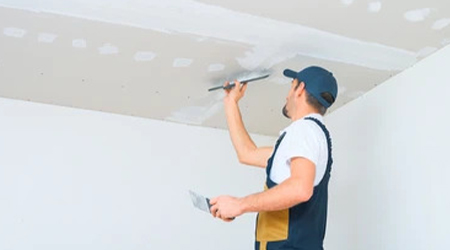
High ceilings can add a touch of grandeur and spaciousness to a room, but when it comes to taping and mudding, they pose unique challenges that require careful consideration and specialized techniques. In this guide, brought to you by Ontario Drywall and Taping, we’ll delve into the intricacies of overcoming challenges when taping and mudding high ceilings to ensure a flawless finish in your Ontario home.
Assessing the Scope of the Project: Before you begin, thoroughly evaluate the scope of your taping and mudding project for high ceilings. Take note of imperfections or damage, as addressing these issues upfront can save time and effort later in the process.
Choosing the Right Tools and Equipment: High ceilings require the right tools to ensure efficiency and safety. Invest in an extendable taping knife, a sturdy ladder, and a drywall lift for large sections. Quality tools can make a significant difference in the outcome of your project.
Proper Safety Measures: Safety should be a top priority when taping and mudding high ceilings. Ensure your ladder is stable and positioned on a level surface. Consider using safety harnesses and always have a spotter when working at elevated heights. Following safety guidelines reduces the risk of accidents during the project.
Working in Manageable Sections: Divide your high ceiling into manageable sections to make the project more approachable. Taping and mudding one section simultaneously allows for greater precision and control. It also minimizes the physical strain of reaching overhead for extended periods.
Thin and Consistent Layers of Joint Compound: Applying thin and consistent layers of joint compound is crucial for achieving a smooth finish on high ceilings. It ensures even coverage and helps prevent sagging and cracking over time. Take your time to feather the edges for a seamless transition.
Using the Right Type of Joint Tape: Choosing the appropriate joint tape for high ceilings is essential. Mesh tape is often preferred due to its flexibility and ability to adhere well to vertical surfaces. It provides added strength to joints and helps prevent cracking, especially in areas prone to movement.
Managing Drying Times: High ceilings may have different drying times than standard wall surfaces. Be patient and allow each layer of joint compound to fully dry before proceeding to the next application. Using fans and proper ventilation can expedite the drying process.
Sanding Techniques for Smooth Results: Sanding is critical in achieving a professional finish. Invest in a pole sander to reach high areas without constantly climbing up and down the ladder. Use fine-grit sandpaper for a smooth surface, ready for priming and painting.
Tackling the challenges of taping and mudding high ceilings requires a strategic approach and a suitable set of tools. With these expert tips from Ontario Drywall and Taping, you can confidently embark on your project, knowing that you know how to achieve a flawless finish that enhances the beauty of your elevated spaces in Ontario.

When it comes to interior design, walls are your canvas. At Ontario Drywall and Taping, we believe that drywall isn’t just a surface; it’s an opportunity for artistic expression. In this article, we’ll explore the captivating world of drywall textures and finishes and how they can infuse your spaces with character and charm. Join us as we take a journey into the realm of design possibilities.
Smooth walls have their place, but textured walls bring an entirely new dimension to your interiors. From subtle textures that add depth to bold patterns that demand attention, textured walls can be customized to match your style and vision.
Our experts at Ontario Drywall and Taping are skilled in a range of texturing techniques that can transform your walls. Popular choices include:
Skip Trowel Texture: This technique creates a textured surface with subtle, irregular patterns that catch and reflect light in fascinating ways.
Knockdown Texture: Offering a rustic yet refined appearance, knockdown texture involves applying a textured compound and then flattening it for a slightly uneven surface.
Orange Peel Texture: Mimicking the texture of an orange peel, this technique adds a subtle, consistent texture that adds visual interest without being overwhelming.
Swirl Texture: Swirl patterns lend a sense of elegance to your walls with their graceful and flowing designs.
Comb Texture: Combining both fine and coarse textures, this technique creates a striking pattern that catches the eye.
Drywall finishes are the final touch that can turn your walls into a masterpiece. From classic finishes to contemporary styles, each finish brings its own unique personality to a room.
Venetian Plaster Finish: This luxurious finish mimics the look of polished marble, adding a timeless and sophisticated elegance to your space.
Sponging Finish: Achieve a playful and organic appearance with a sponge-applied finish that adds depth and dimension to your walls.
Metallic Finish: For a touch of modern glamour, metallic finishes offer a reflective and eye-catching surface that enhances ambient lighting.
Distressed Finish: Create a rustic or vintage ambiance by distressing your walls, giving them a weathered and lived-in appearance.
At Ontario Drywall and Taping, we understand the importance of personalized spaces. Our experts are skilled in creating textures and finishes that align with your design vision. We take pride in turning your walls into unique pieces of art that reflect your style and personality.
Unleash your creativity and infuse your living spaces with character. Contact Ontario Drywall and Taping today to explore the world of drywall textures and finishes. Our experts are ready to transform your walls into stunning works of design that captivate the senses.